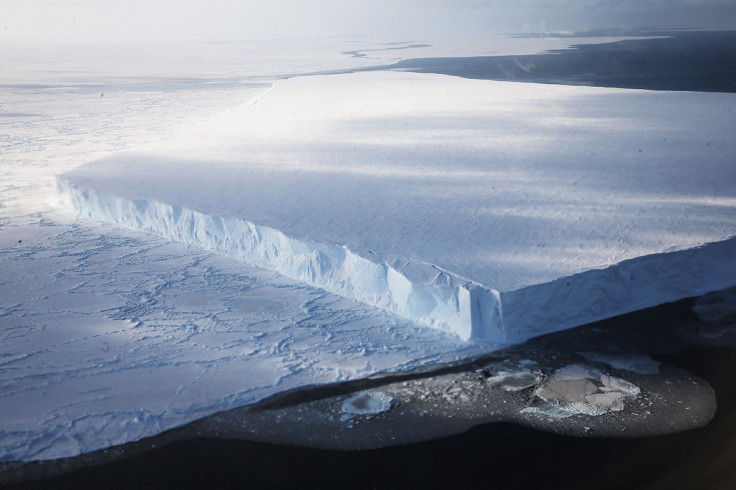Are the headlines true, that a chunk of polar ice the size of India just melted into the sea?
No, it's not true. But there are plenty of unusual things happening at the poles at the moment.

A chunk of ice the size of India has not suddenly broken off and melted in the Arctic, or the Antarctic, or a combination of the two – but global sea ice is now at a record low for the time of year and scientists are saying that the anomalies are striking.
You may have seen headlines saying "Polar sea ice the size of India vanishes in record heat", "Arctic and Antarctic sea ice reaches record lows after section the size of India melts" or "Polar ice the size of India has melted into the sea, scientists say".
Global sea ice – combining the sea ice in the Arctic and the Antarctic – certainly is at a record low for early December, according to data from the US National Sea Ice Data Center's satellite measurements.
It's so low that the difference between the 30-year average global sea ice for this time of year and what we have now is about 3.84 million square kilometres. That is a measurement roughly the size of India, which is different from saying that a chunk of ice the size of India has just melted into the sea.
"Using the word melted is incorrect," Julienne Stroeve, a senior research scientist at NSIDC, told IBTimes UK. The Arctic isn't melting at the moment because it's winter. Right now in the Arctic sea ice extent is growing, she says. Ed Hawkins, meteorologist at the University of Reading, agrees that the headlines are misleading.
The extent is, however, growing more slowly than usual in the Arctic due to November temperatures well above normal for the time of year. On some days air temperatures near the North Pole were 20C warmer than usual. On average, the Arctic was 10C warmer than average for the whole month.
Meanwhile at the other end of the world, the Antarctic is heading towards summer and the sea ice is melting faster than usual due to unusual wind patterns. John Turner of the British Antarctic Survey says that strong northerly winds seem to be causing a lot of the speedier melting.
"The extent of sea ice over short periods is strongly influenced by the strength of the winds, and especially winds from the north that both push the sea ice back southwards and also bring warm air into the Antarctic causing the ice to melt," Turner says. "This October and November we've had a lot of deep storms that have given strong northerly winds."
All in all, the anomalies at both poles are "really striking", Stroeve says.
Hawkins says that we may face many more months of record-low global sea ice, or it could be that the Arctic sea ice extent will start to pick up more rapidly as temperatures drop.
"If the air temperatures cool the sea ice could recover. If the air over the Arctic stays warm it will refreeze at a lower rate," says Hawkins. "What happens over next few weeks, we'll have to wait and see."
© Copyright IBTimes 2025. All rights reserved.






















